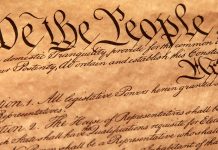Saturday, July 4, marks the 244th anniversary of the signing of the Declaration of Independence
The declaration is an essay in four parts: The preamble, the Declaration of Natural Rights, the List of Grievances and the Resolution of Independence.
The declaration of natural rights begins, “We hold these truths to be self-evident, that all men are created equal, that they are endowed by their Creator with certain unalienable Rights, that among these are Life, Liberty and the pursuit of Happiness.”
While we treat the declaration as a public pronouncement of our rights and values and the reason for our rebellion, it was not a proclamation to the American people like a modern policy speech.
Instead, it was a letter addressed from the elected leadership of the American colonists to their British cousins, not to other Americans. The Declaration of Independence was a tacit declaration of war and the majority of the document was intended to tell their British cousins about the offenses done to the 13 Colonies by Great Britain, but personally attributing those sins to the person of King George III, not the British state, prompting a move toward American independence.
At the time, British citizens and American colonists both had commoners and nobility; the statement was to tell the British that Americans believed all male commoners were equal to lords, counts, marquesses, dukes, kings and knights.
While we cite the phrase “… all men are created equal …” in our modern political discourse, we must keep in mind that “all men” as written in 1776 did not include all Americans, nor did it just include all English-born white colonists and their American descendants, but rather all white men over age 21 who owned land.
There were only 3.9 million people in the United States in 1790 and of those, only about 4% to 6% percent had full voting rights when the Constitution was ratified.
The majority of soldiers who served in the Continental Army did not enjoy the voting rights for which they had fought. However, they did believe that having local control and being able to speak in public assemblies was preferable to being ruled by nobles from oversees.
We can see these same values of local control over that of a central government when states resist the federal government or cities like Sedona, Camp Verde or Cottonwood resist control from legislators in Phoenix or county supervisors in Prescott or Flagstaff.
Kentucky was the first state to repeal the property requirement for white men to vote in 1792. North Carolina was the last of the then-existing states to allow all white men to vote in 1856. Freed slaves and nonwhite men, except American Indians, were not given the right to vote until 1870 under the 15th Amendment, though Jim Crow laws and other voter suppression efforts prevented what “should be” from what was well into the 20th century.
Women didn’t get the vote until the 19th Amendment in 1920 and American Indians were not granted these same full rights of voting and free speech until the Indian Civil Rights Act was passed in 1968.
The voting age was lowered to 18 in 1971 so that those who were being drafted to fight in Vietnam could have some voice in the decisions that were sending them to war.
While many use the descriptor “Founding Fathers,” this patriarchal term wasn’t coined until Warren G. Harding began using it 1916 in a speech accepting the nomination for president. Before that they were just called the Signers or the Signatories of the Declaration of Independence and the Framers of the Constitution.
Some signers were idealists, many later became officers or generals in the American Revolution but most were regional politicians who drafted the Declaration of Independence. The purpose of the declaration was to set the foundation for a country the signers hoped future generations would make better.
They themselves did so when they saw the Articles of Confederation, which governed the states from 1781 to 1788, was failing and replaced it with the Constitution in 1787. Seeing that such documents would need the means to adapt to changing times, the Constitution’s Article V is specifically included to lay out an amendment process. It only took four years for the Constitution to see its first 10 amendments, which were added as a promise to anti-Federalists who worried about a strong central government and the lack of civil liberties.
The bedrock of our most important civil right — free speech — was not even in the original Constitution, but added in 1791 as part of the First Amendment, which also protects newspapers, protests, petitions and separates religion from the state.
The Signers wrote “all men are created equal,” but it’s up to us to bend history toward justice and ensure “all people are created equal and treated equally” under the law.
The Framers wrote in the Constitution’s preamble that the document’s purpose was conceived “in order to form a more perfect union.”
That is not a statement of the Framers’ achievement. It is a directive. It is an entreaty. It calls on us to continue striving to make our still-flawed nation a more perfect union.
Christopher Fox Graham
Managing Editor






















